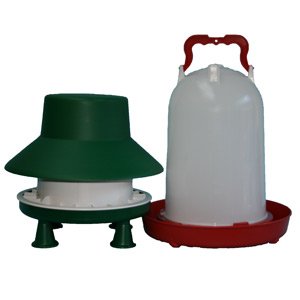 To feed chickens correctly you will need chicken food that is fresh, clean and nutritious. Luckily, chickens aren’t fussy eaters and will devour worms, leftovers, pellets, seeds, vegetables, insects, slugs and even small pebbles. They are happiest when they are able to range around for food and this keeps them active and healthy too. The main types of chicken food are discussed below:
To feed chickens correctly you will need chicken food that is fresh, clean and nutritious. Luckily, chickens aren’t fussy eaters and will devour worms, leftovers, pellets, seeds, vegetables, insects, slugs and even small pebbles. They are happiest when they are able to range around for food and this keeps them active and healthy too. The main types of chicken food are discussed below:
Layers Feeds and Protein
Chickens need protein to produce new feathers and healthy eggs as well as to grow and maintain good health. Eating a reasonable amount of protein is important. You can find the percentage of protein in layers feed written on the labelling of commercially produced food. ‘Growers Pellets’ for example has a particularly high protein content to enable chickens to grow and produce feathers which is more important during moulting when chickens can stop laying eggs as their bodies use protein to produce new feathers. Pellets contain about 16% protein where as wheat is only about 10% protein and lacks essential vitamins.
Commercial chicken feedsalso contain the correct balance of minerals and nutrients required by chickens as so generally lead to healthier and happier chickens. Formulated feeds come as pellets or mash and should be fed so hens can eat what they want when they need it. It must be kept dry to prevent it going off. You can buy feeders which do this.
Picture is of Farmway Layers Pellets 20kg Chicken Feed
Mixed corn

Kitchen scraps
Using kitchen scraps used to be a common way to feed chickens, however, is no longer allowed by DEFRA. You don’t really know what a hen is eating and the diet can be unbalanced. Greens on the other hand can be used: grass cuttings, weeds and offcuts from cabbages, cauliflowers etc. can be added to your chicken’s diet. However, avoid lettuce and do NOT feed avocado as it is poisonous to hens.
Grit

Poisonous plants
The following plants are poisonous for chickens, make sure you do not have them in any area in which your chickens roam free.
Avocardo, Bloodroot, Bull Nettle, Bracken, Bryony, Carelessweed, Castor Bean, Cocklebur, Curly Dock, Daffodil, Delphinium, Elderberry, Fern, Foxglove, Ground Ivy, Hemlock, Horse Chestnut, Horse Radish, Hyacinth, Hydrangea, Ivy, Laburnum, Lamb’s Quarters, Lantana, Lettuce, Lily of the Valley, Nightshade, Rhododendron, St. Johns Wort, Tulip, Water Hemlock and Yew.
Chicken food and feeders can be ordered directly from this our shop. Visit now.











